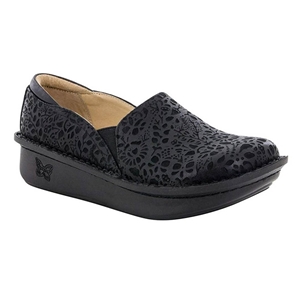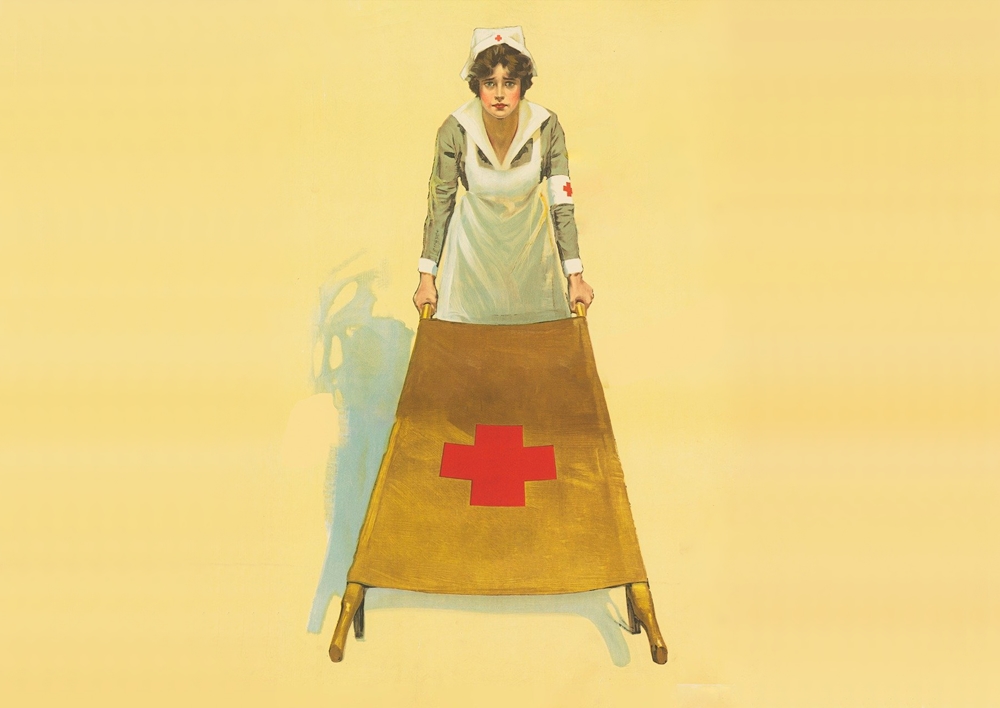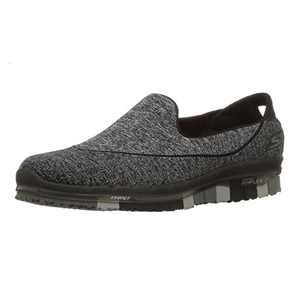Spoiler alert: We know that this guide is about the best shoes for Plantar Fasciitis but, our first three picks are not shoes.
These days, a lot of folks suffer from heel pain, mainly due to Plantar fasciitis. If someone has plantar fasciitis, they have a hard time running or walking.
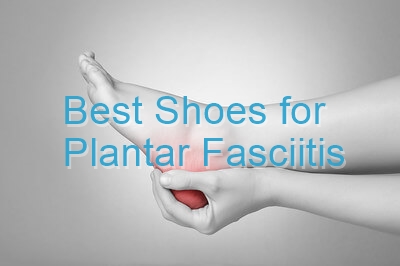
The Plantar fascia is the thickest ligament people have in their body. It consists of a thick ring of tissue connected the ball of the foot. If the Plantar fasciitis is strained and suffers an injury it causes microscopic tears of the ligament where it connects to your heel bone.
This causes inflammation which goes all across the bottom of the foot, which brings on pain in the heel. It might start with a minor soreness in your arch of the foot or the heel. Do not ignore this pain or else these microscopic ligament tears where it connects to your heel bone may end up causing chronic pain in your heel.
Why is important to wear the best shoes for plantar fasciitis
If you wear the correct shoes, it will deliver support for the Plantar Fasciitis. With the correct, top-notch Plantar Fasciitis footwear constructed of lightweight components, your troubles will be over. But if you instead wear the wrong kind of shoes, you will be at a higher risk of complications from plantar fasciitis.
For instance, extremely high heels elevate the arch of the foot, which causes disproportionate strain to be placed on the plantar fascia. Also, even flats are not the best kind of shoes to wear, as they further strain your arches.
Yet another bad choice is Flip flops due to their thin soles which cause the arches to stand by themselves, which provides no heel support. It is possible for the feet to develop plantar fascia as well as additional ligaments and muscles in the feet.
What do the experts say?
Experts advise picking shoes that are capable of delivering adequate arch support. Beginning to use that kind of shoes will provide support in the daytime, and this is an example of a method of handling the problem as well as easing the feet after a long day at your job, and it’s another apparent method to handle the problem.
Therefore, if you’re additionally among the folks suffering from this problem, you have to acquire the type of nursing footwear that’s most comfortable for plantar fasciitis.
However, without sufficient knowledge, buying nursing shoes may end up being a catastrophe which puts you in additional pain.
This is the reason you have to find the top nursing footwear to help with plantar fasciitis.
To help you in your hunt, we have listed several types of shoes meant to assist you dependent on your activities every day from shoes you wear all the time, to walk as well as work footwear.
Not just do these avert you damaging the plantar fascia more, they additionally assist in lowering the amount of pain you feel.
So, let’s start to list out the best picks from the experts to fix your issue. Here’s the top footwear for nurses who suffer from plantar fasciitis.
These are the Best Shoes for Plantar Fasciitis for Nurses and in General
Surprisingly, the first two picks are not shoes. This decision is made based on our research and recommendations and the positive impact made by such items.
1. Powerstep Original Full Length Orthotic Shoe Insoles
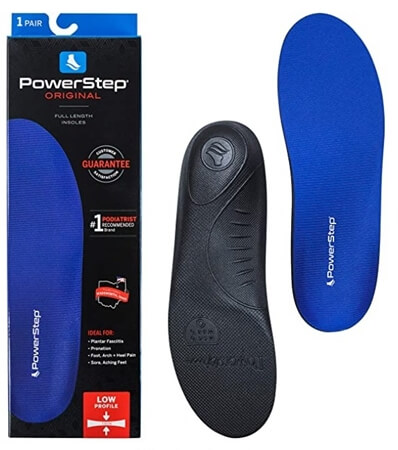
2. Dr. Scholl’s Plantar Fasciitis Pain Relief Orthotics
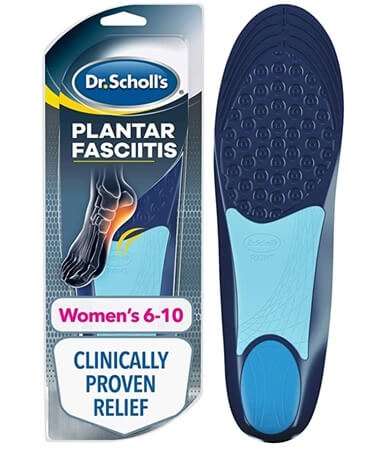
3. Calf Compression Sleeves from Run Forever Sports
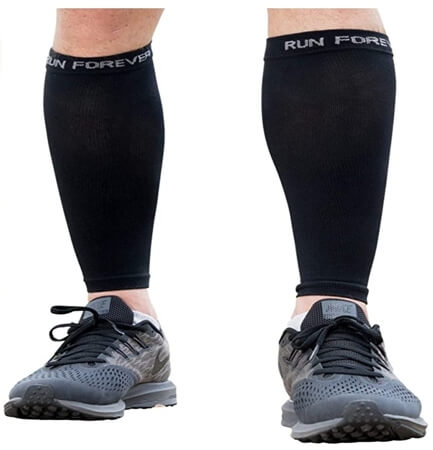
4. Ariat Men’s Workhog Pull-on H2O Composite Toe
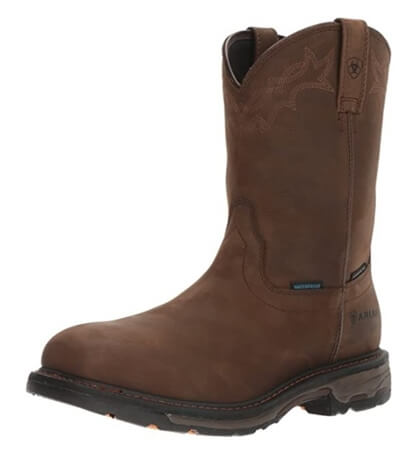
5. Brooks Women’s Adrenaline GTS 20
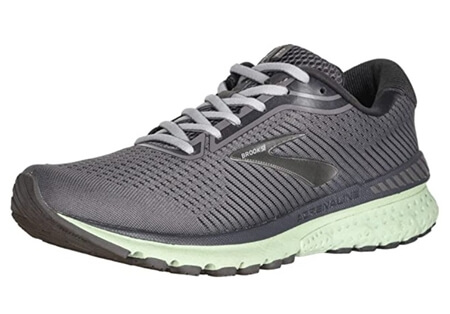
6. Ryka Womens Devotion Plus 2
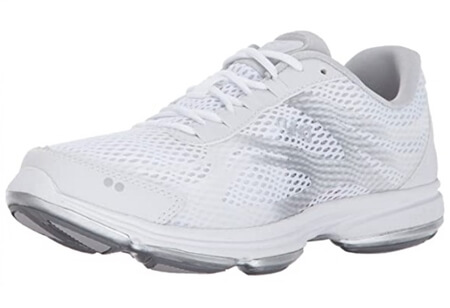
7. ASICS Men’s Gel-Venture 7 Trail Running Shoes
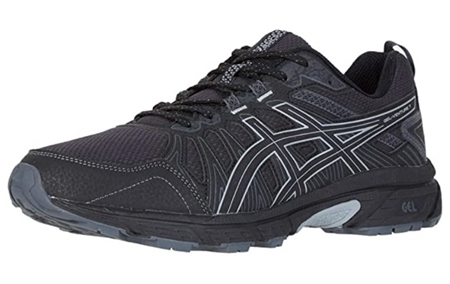
8. Merrell Men’s Jungle Moc Slip-On Shoe
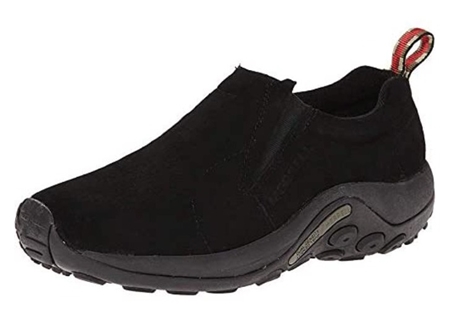
The Indications for having Plantar fasciitis
Plantar fasciitis normally triggers a stabbing ache on the bottom of the feet near your heel. This pain is typically the most horrible within the first several steps you take after you wake up, though it may additionally get triggered via long intervals of standing up or whenever you rise after sitting down. This pain is typically harsher after you perform exercise, not while doing it.
Reasons
Plantar fascia is shaped like a bowstring, reinforcing the arch of the feed and absorbing the shock whenever you are walking. If pressure and stress upon that bowstring gets worse, tiny tears may appear in the fascia. Repetitive stretches and tears may aggravate or worsen the fascia problem, though the reason stays uncertain in a lot of plantar fasciitis cases.
Risk considerations
Whereas plantar fasciitis may happen without an apparent reason, a few factors may improve your chances of acquiring this condition. These include:
• Age. Plantar fasciitis happens more often in folks between forty and sixty years old.
• Particular kinds of exercise. Actions that put lots of tension on the heel along with the affixed tissue — like long-distance running, as well as aerobic and ballet dancing— may be a factor regarding the start of plantar fasciitis.
• Foot mechanics. If someone has flat feet, or their arches are high or even an irregular walking pattern may affect the manner the weight gets distributed whenever you are standing as well as cause additional tension on your plantar fascia.
• Obesity. Excessive pounds place additional tension on plantar fascia.
• Jobs which make someone stay standing all day. Factory laborers, as well as schoolteachers and those that mostly are walking or standing long hours, especially if on a hard surface, may injure their plantar fascia and make it worse.
Complications
Disregarding plantar fasciitis can cause the heels to be painful chronically so that you can’t perform your normal activities. Altering the manner in which you walk in order to reduce pain from plantar fasciitis can cause problems with the feet, hips, back or knees.
Diagnosis
Plantar fasciitis is identified dependent on medical history as well as a physical exam. Throughout this exam, the physician will check to see if any part of your feet is tender to the touch. Where the pain is located assists them in figuring out why you are having this pain.
Imaging tests
Typically, no tests are needed. Your physician may recommend getting X-rays or an magnetic resonance imaging (MRI) to be certain another issue, like stress fractures, isn’t causing your pain.
At times X-rays will reveal a chunk of bone that sticks out (also called a spur) from your heel bone. Before now, those bone spurs often got blamed for any heel pain, so they were surgically removed. But a lot of folks with bone spurs upon their heels don’t have heel pain.
Home Remedies and Lifestyle
Here are some things to try on your own to lessen plantar fasciitis pain:
• Keep up a healthy weight. If you carry extra weight, this may place additional tension on the plantar fascia.
• Select supportive footwear. Purchase shoes that have low to moderate heels, along with great support for your arches, thick soles and additional padding. Do not go without shoes.
• Do not wear tennis shoes that are worn-out. Replace any old tennis shoes prior to them wearing out and if they no longer cushion the feet or support the feet.
• Change the sports you do. Go with a sport that’s low-impact like going swimming or riding a bike, and don’t go jogging or walking.
• Use ice. Press a cloth-wrapped ice pack over the painful area for fifteen minutes 3 or 4 times every day. Using ice helps to lessen inflammation and pain.
• Stretch the arches. Uncomplicated home exercises will stretch the plantar fascia, as well as the calf muscles and your Achilles tendon.
How to reduce pain
When you get out of bed every morning, that starts the new day off right. However, it may be an agonizing start for folks who have plantar fasciitis, which is an example of the top common reasons for heel pain in grownups.
The key symptom is severe pain which feels similar to a deep bruise located on the bottom of the feet, right in front of your heels. It is typically the worst in the beginning of the day and whenever you rise up after you have been seated a long time. This pain might stop when you start walking, however it probably will come back by bedtime if someone spends a large part of their day standing up.
The source of this pain is an inflamed plantar fascia, the band of tendon-like tissue which extends alongside the bottom of the feet (the plantar surface) from the heel bones to the ball of the feet, in the place it fans out and attaches to your toe bones. Whenever tension or a strain injury or you’ve overstretched your plantar fascia, that’s where it may swell, tear or bruise.
Conclusion on the best shoes for Plantar Fasciitis
Plantar fasciitis happens mostly due to high-impact events, like jumping or running, however it may additionally happen after lengthy periods of standing up. It is more commonly seen in individuals who are overweight or have flat feet, as well as in elderly people as their plantar fascia ends up less elastic as you get older, thus it’s more susceptible to being injured.
Frequently Asked Questions
Can wearing the right shoes help with plantar fasciitis?
Absolutely! Wearing the right shoes can make a significant difference in managing plantar fasciitis, both for nurses and in general. Shoes specifically designed to provide excellent arch support, cushioning, and shock absorption can help alleviate the pain and discomfort associated with plantar fasciitis. These shoes are typically equipped with features such as supportive insoles, heel cups, and orthotic inserts that help distribute pressure evenly and reduce strain on the plantar fascia. By wearing shoes that cater to the needs of individuals with plantar fasciitis, nurses can experience increased comfort and potentially reduce the severity of their symptoms.
What should I look for when selecting shoes for plantar fasciitis?
When choosing shoes for plantar fasciitis, there are a few key features to consider. First, prioritize excellent arch support, as this helps maintain proper foot alignment and reduces strain on the plantar fascia. Look for shoes with firm yet supportive midsoles that can help distribute weight evenly. Cushioning is also crucial to absorb shock and provide extra comfort. Additionally, opt for shoes with a deep heel cup to provide stability and promote proper heel alignment. It’s also important to select shoes with a roomy toe box to allow for natural toe movement. Remember to try on different styles and brands to find the one that offers the best combination of support and comfort for your specific needs.
Are there specific shoe brands known for their effectiveness in managing plantar fasciitis?
While individual experiences may vary, there are several shoe brands that have gained a reputation for their effectiveness in managing plantar fasciitis. Brands like Brooks, ASICS, New Balance, Saucony, and Hoka One One are often recommended by healthcare professionals and individuals with plantar fasciitis. These brands typically offer a range of shoes designed with features that prioritize comfort, support, and cushioning. It’s important to keep in mind that everyone’s feet are unique, so what works for one person may not work for another. It’s advisable to try on different shoe brands and styles to find the ones that feel the most comfortable and supportive for your specific condition.
Can wearing proper shoes for plantar fasciitis prevent further complications?
Wearing proper shoes for plantar fasciitis can indeed help prevent further complications and potentially reduce the risk of exacerbating the condition. The right shoes provide the necessary support and cushioning to alleviate stress on the plantar fascia, reducing the likelihood of additional strain or injury. By wearing shoes that promote proper foot alignment, distribute weight evenly, and absorb shock effectively, individuals with plantar fasciitis can minimize the chances of developing related problems, such as heel spurs or chronic foot pain. It’s important to consult with a healthcare professional, such as a podiatrist, for a comprehensive evaluation and personalized recommendations on footwear that best suits your specific condition.
You may also like
Alegria Debra Women’s Slip-On Review
Alegria Debra women`s slip-on is an imported nursing shoe that is made of the following:…
The Evolution of Nursing: From Florence Nightingale to Modern Nursing Practice
Discover the remarkable journey of nursing. Nursing’s historical roots Embarking on a journey through the…
Why are work shoes for nurses so important?
In the fast-paced and demanding world of nursing, work shoes play a vital role in…
Skechers Performance Women’s Go Flex Walking Shoe Review
Skechers Performance Women’s GO FLEX Walk™ Shoe is a shoe which moves with the wearer….
Telehealth Nursing: Navigating the Future of Remote Patient Care
The Emergence of Telehealth Nursing Telehealth nursing has emerged as a transformative force in the…
The Diversity and Inclusion Imperative in Nursing: Building a More Representative Workforce
Importance of Diversity and Inclusion in Nursing Diversity and inclusion are not merely concepts; they…
